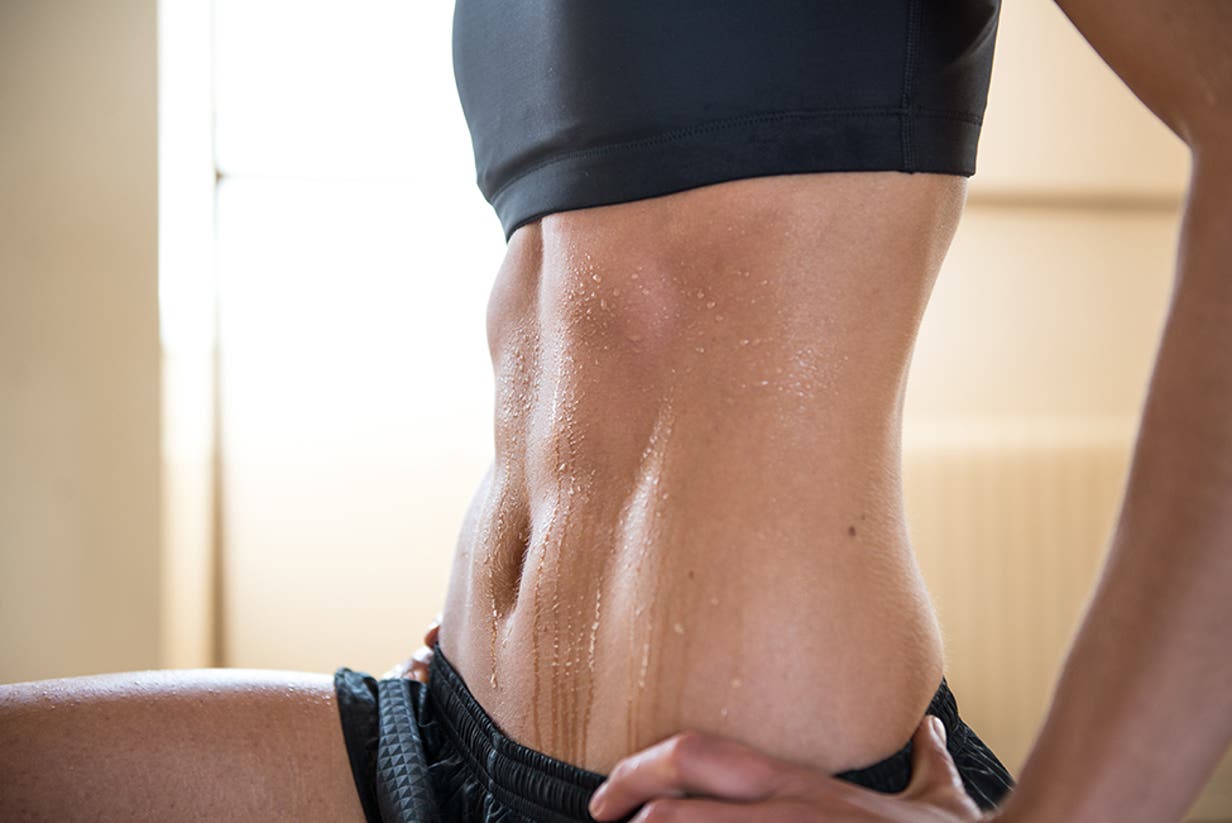When you think of core strength, do you picture six-pack abs and endless amounts of sit-ups? Then it’s time we changed your perspective. Because a strong core goes way beyond that. Everything from daily tasks like tying your shoelaces and cleaning, to heavy weight lifting and athletic exercises all require your core muscles. The stronger they are, the better you’ll perform. So let’s go deeper into the subject and find out what’s really behind a good set of abs.
Which muscles make up the core?
The core musculature includes rectus abdominis, internal and external obliques, erector spinae and pelvic floor muscles. It forms the central link between your upper and lower body and is responsible for maintaining the stability of the spine and pelvis. The core muscles are crucial for the transfer of energy from the larger to smaller body parts and therefore as you can imagine play a huge role when it comes to sports.

Benefits of a strong core
Having a strong core won’t only affect your sit-up PB. It can have a positive impact on your physical wellbeing as a whole. The benefits of core training include:
Stabilize lower back
When you train your core, your lower back also gets stronger and healthier. Making you less likely to suffer from back pain. Core strength is also extremely important when it comes to weight lifting. A strong core protects your back muscles, therefore lowering the chances of an injury occurring.
Run faster
Did you know that core strength is extra important for a runner? Your core muscles keep your torso upright when you run and allows the pelvis, hips and lower back to work together more smoothly. Because your arms and legs are all connected to the core, the stronger your torso, the stronger your limbs. And every runner knows the importance of maximum power in those legs.
Enhance flexibility
As mentioned above, core exercises stabilize the lower back. This can do wonders for your ligaments and muscles. With a stabilized back, stress and tension are removed, implying a greater range of motion and enhanced flexibility.
Improve balance, coordination, posture and brain power
As the back and abdominal area becomes stronger, the body’s balance and coordination also improves. When you do core exercises it stimulates a particular area in the brain called the cerebellum which affects coordination, spatial awareness and balance. These exercises are not only a workout for your body, but also for your brain. So if you’re into sports which require good hand-eye coordination – like baseball, basketball, football or tennis, it’s worth it to work on those abdominal muscles.
Now it’s time to work on your core strength
Sure crunches and situps are effective. But these are not the only exercises for your core. Here’s what else you can try.
Jackknives
- For the starting position lie full length on your back and keep your heels, glutes and shoulders touching the ground.
- Touch the ground with your feet as well as with your hands behind your head.
- Bring your legs vertical to the ceiling and try to touch your feet with your hands. Make sure that your legs are straight all times and that you keep your core tight.
Climbers
- Assume a pushup position, so that your hands are directly under your shoulders and only your hands and feet touch the ground.
- Try to bring your right foot next to your right hand while keeping your hips below your shoulders.
- From this position continue with the left leg and end up in the same position as your left foot is next to your left hand. Each side counts as one repetition. Bear in mind to keep your shoulders tight.
See more about Mountain Climbers here.
Plank
- Get into a pushup position and bend your elbows and rest your weight on your forearms. Your elbows should be directly beneath your shoulders and your body should form a straight line from your head to your feet. Hold this position for as long as you can. Remember to hold the proper plank form.
Squats
- Stand with your heels not further than shoulder width apart and have a upright stance.
- Start to lower your body back as far as you can by pushing your hips back and bending your knees. As you do the movement do not touch your body with your arms. For balance you can raise out your arms in front of you. Your shoulders, hips, knees and heels should be in one line and make sure to put the weight on your heels.
- Then lift back up to the starting position.
Now that you have the ultimate knowledge when it comes to the benefits of core strength, it’s time to start strengthening yours. Prepare to get faster, stronger and perform better, with a core of steel.
